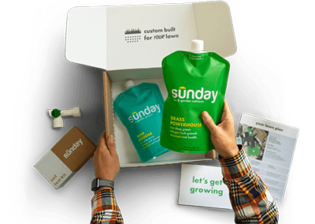Are you looking to elevate your New York lawn game with the perfect grass seed? You’ve come to the right place! Kentucky Bluegrass is a fantastic option, but we’ve also packed this article with essential details and alternative options to help you choose the best grass seed for your Empire State lawn.
New Yorkers often face unique challenges in maintaining a lush, green lawn, from extreme weather swings to compacted soil. But don’t let that get you down! Dive into this article to gather all the wisdom you need for a grass seed decision tailored to your specific New York lawn care needs.
The Best Grass Seed For New York Summary
USe the following table to get a quick summary of the best grass seed for New York, or read on for more detail.
| Grass Type | Type of Grass | Optimal Zones | Winter Hardiness | Shade Tolerance | Water Requirements | Drought Tolerance | Self Repair Capacity | Overall Maintenance Requirements |
|---|---|---|---|---|---|---|---|---|
| Kentucky Bluegrass | Cool season perennial | Northern cool season zone, transition zones | Excellent | Poor to Good | High | Poor | Excellent | High |
| Perennial Ryegrass | Cool season perennial | Mild northern zones | Good to excellent | Moderate | High | Good | Excellent wear tolerance | Moderate to high |
| Tall Fescue | Cool season perennial | Northern through transition zones | Excellent | High | Medium to High | Excellent | Limited | Low |
| Fine Fescue | Cool season perennial | Northern zones | Excellent | Excellent | Medium to High | Excellent | Limited | Low |
Kentucky Bluegrass
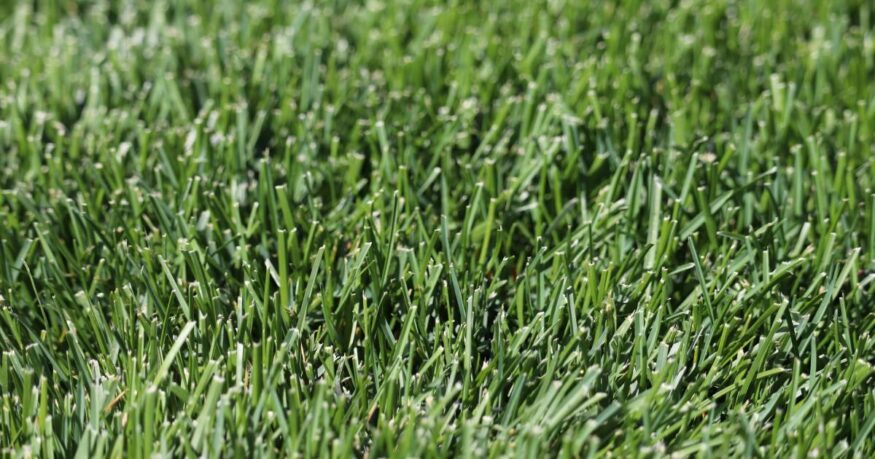
| Also Known As | Poa pratensis L. |
| Type of Grass | Cool season perennial |
| Optimal Zones | Northern cool season zone, transition zones |
| Root Structure | Shallow |
| Winter Hardiness | Excellent |
| Shade Tolerance | Poor to Good |
| Water Requirements | High |
| Drought Tolerance | Poor |
| Self Repair Capacity | Excellent |
| Overall Maintenance Requirements | High |
Why Kentucky Bluegrass is The Most Popular Choice For New York
When it comes to choosing the best grass for your New York lawn, Kentucky Bluegrass is a top contender. With its deep green color and soft texture, it’s both attractive and comfortable, making it an excellent choice for homeowners who desire a beautiful, functional yard. Knowing many New York residents myself, I can attest to the fact that Kentucky Bluegrass has been an ideal option for lawns in the area.
Why is Kentucky Bluegrass perfect for New York lawns?
- It withstands foot and pet traffic, making it ideal for families and pet owners
- Its vigorous rhizomes help it recover quickly from damage and fill in bare spots
- It thrives in moderate temperatures, like New York’s spring and fall seasons
- It’s extremely cold-hardy, surviving harsh winters
To keep your Kentucky Bluegrass lawn looking its best, follow these tips:
- Mow it to 2.5 inches in spring and fall, and 3.5 inches in summer to cope with heat and drought
- Water at least 2 inches per week, especially during dry spells, since its shallow roots make it vulnerable to drought
However, there are a few things to consider before planting Kentucky Bluegrass:
- It’s not shade-tolerant, so it needs full sun or at least six hours of sunlight per day
- It isn’t heat-tolerant and can go dormant or turn brown during hot summer months; consider overseeding with heat-tolerant grass types or watering more frequently
Kentucky Bluegrass is a fantastic option for New York homeowners seeking a durable, attractive lawn. Its resilience and ability to withstand traffic make it popular, while its cool-season growth and cold-hardiness suit the state’s climate. Keep its sunlight and heat requirements in mind, and you’ll have a beautiful lawn in no time.
Looking for the best grass seed for your region?
Our smart lawn plans are designed to work perfectly with your local soil and climate conditions, without any of the toxic stuff.
Use the code EHG20 for an instant $20 discount!
- Personalized lawn care: Custom lawn plans based on soil analysis, climate data, and your specific lawn needs.
- Convenience with a conscience: Products that are not only easy to use but also safe for you, your pets, and the planet.
- Science-backed formulas: Bio-based formulas contain effective, natural ingredients like seaweed, molasses, and iron.
- Expert support: Get one-on-one guidance from a real person and rest easy with Sunday's satisfaction guarantee.
Perennial Ryegrass
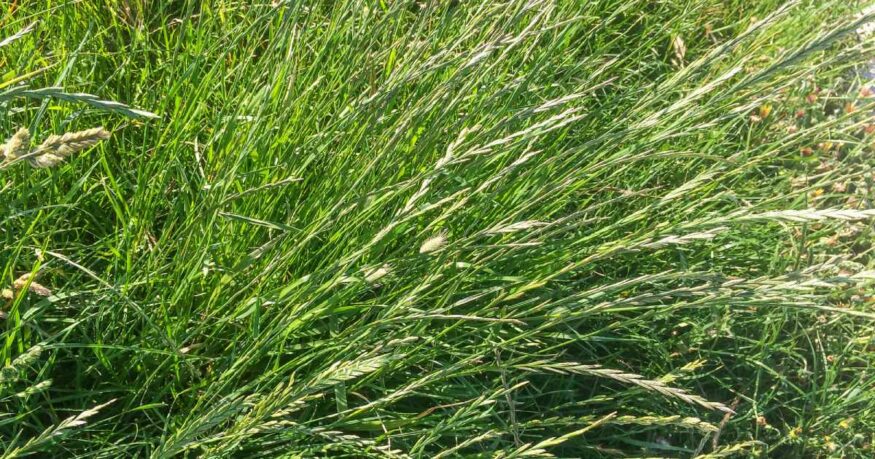
| Also Known As | Lolium perenne L. |
| Type of Grass | Cool season perennial |
| Optimal Zones | Mild northern zones |
| Root Structure | Deep |
| Winter Hardiness | Good to excellent |
| Shade Tolerance | Moderate |
| Water Requirements | High |
| Drought Tolerance | Good |
| Self Repair Capacity | Excellent wear tolerance |
| Overall Maintenance Requirements | Moderate to high |
What Makes Perennial Ryegrass A Great Grass Choice
If you’re a New Yorker seeking the perfect grass seed for your lawn, perennial ryegrass is a fantastic option. This cool-season grass flourishes in the cooler temperatures of spring and fall and can withstand New York’s cold winters. Its fast germination rate and rapid establishment make it ideal for overseeding warm-season grasses in the fall, providing temporary winter color.
One reason perennial ryegrass is a top choice for New York lawns is its dense growth habit, which helps shade out weeds and offers excellent ground coverage. Additionally, the waxy coating on its leaves intensifies lawn stripes. This grass type is also tolerant of light shade and requires moderate to high maintenance, depending on the environmental conditions.
To keep your perennial ryegrass lawn looking its best, follow these tips:
- Mow regularly to maintain a height of 2-3 inches
- During dry spells, water deeply and consistently, providing at least 1 inch of water per week to keep it green and thriving
- Fertilize monthly during the growing season with a slow-release fertilizer to maintain its health and color
However, it’s crucial to note that perennial ryegrass may not be suitable for every lawn owner. It may struggle if winter temperatures are too low or summer temperatures are too high, as it’s not as cold-hardy as Kentucky bluegrass or tall fescue, nor as heat-tolerant as warm-season grasses. Additionally, it tends to be disease-prone and offers poor freezing tolerance if flooded or exposed to wind. Its poor salt tolerance may also be an issue in coastal areas or near roads that are salted in winter.
Despite these drawbacks, perennial ryegrass remains a popular choice for New York lawns due to its quick establishment and dense growth habit. With proper care and attention, this grass type can help you achieve a beautiful, lush lawn that’s perfect for the Empire State.
Tall Fescue
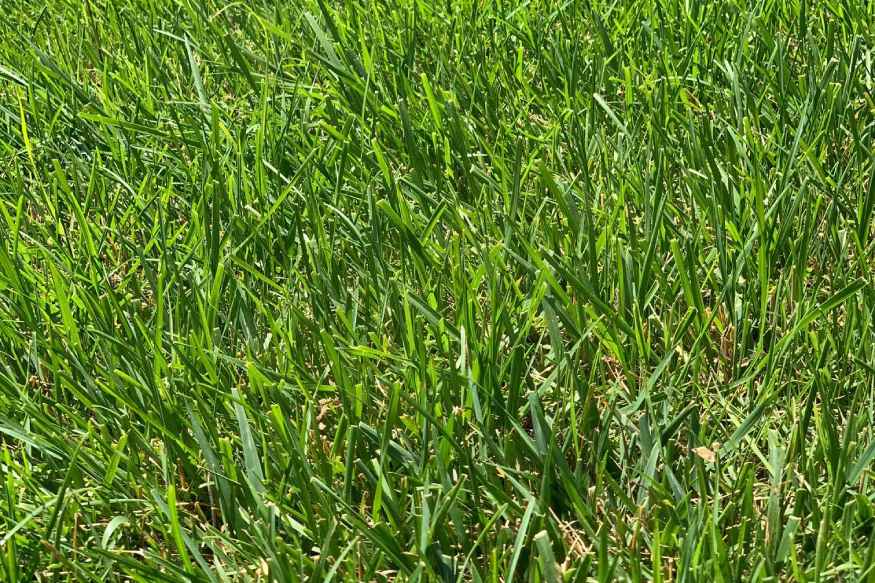
| Also Known As | Lolium arundinaceum (formerly Festuca arundinacea) |
| Type of Grass | Cool season perennial |
| Optimal Zones | Northern through transition zones |
| Root Structure | Deep |
| Winter Hardiness | Excellent |
| Shade Tolerance | High |
| Water Requirements | Medium to High |
| Drought Tolerance | Excellent |
| Self Repair Capacity | Limited |
| Overall Maintenance Requirements | Low |
Why Tall Fescue Grows well in NY
Tall fescue is a popular choice among New Yorkers seeking the perfect lawn grass, and for good reason. This cool-season perennial grass can withstand the region’s hot summers and cold winters, making it a reliable option for homeowners year-round. Its deep root system offers superior heat and drought tolerance, so you won’t have to worry about unsightly brown patches during heatwaves.
One of the top features of tall fescue is its low maintenance requirements. This grass type experiences fewer disease problems compared to other grasses, allowing you to spend more time enjoying your lawn and less time treating it. As a bunching grass, tall fescue spreads vertically rather than creeping into your garden beds, making it easy to contain and maintain a tidy yard.
Aesthetically, tall fescue won’t disappoint. With wide blades and a deep green color that can survive winter months, you’ll enjoy a beautiful lawn year-round. However, keep in mind that this grass may require reseeding if bare spots occur in high-traffic areas.
To keep your tall fescue lawn looking its best, follow these easy care instructions:
- Plant the grass seed during peak growth periods in the fall and spring
- Water deeply right after planting and keep the area consistently moist until the grass sprouts
- Mow the lawn every two weeks in the summer, ensuring it never gets more than one inch tall
- Fertilize twice a year with a slow-release fertilizer
- Overseed in the fall to fill in any bare spots or damaged areas
Tall fescue may not be the best choice for those with lots of yard shade or high humidity, as it struggles in these conditions. In these cases, consider mixing tall fescue with other grasses, like fine fescue or Kentucky bluegrass, which have better shade tolerance.
Overall, if you’re seeking a low-maintenance, water-conserving grass that can handle New York’s diverse climate, tall fescue is an excellent choice for your lawn.
Fine Fescue
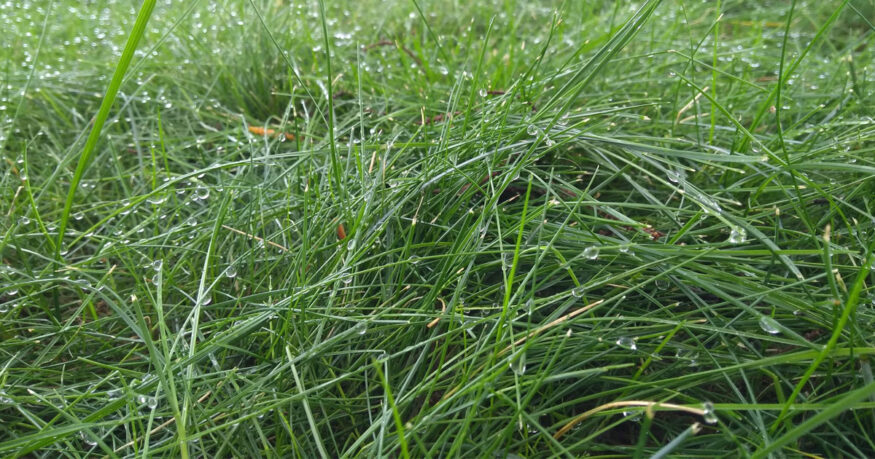
| Also Known As | Hard fescue, strong creeping red fescue, slender creeping red fescue, sheep fescue, chewings fescue; Festuca L. |
| Type of Grass | Cool season perennial |
| Optimal Zones | Northern zones |
| Root Structure | Medium |
| Winter Hardiness | Excellent |
| Shade Tolerance | Excellent |
| Water Requirements | Medium to High |
| Drought Tolerance | Excellent |
| Self Repair Capacity | Limited |
| Overall Maintenance Requirements | Low |
Why Fine Fescue Is a Popular Grass seed Choice
If you’re looking for the perfect grass seed to make your New York lawn the envy of the neighborhood, then fine fescue is a great option. This cool-season grass is a fantastic choice for the Empire State, thanks to its ability to handle cold winters and mild summers with ease. One of the reasons why fine fescue is so popular among homeowners is its ability to tolerate shady areas. In fact, it thrives in low-light conditions better than most other grasses, making it a great option for those tricky spots in your yard that don’t get much sun.
Another big selling point for fine fescue is its drought tolerance. This grass can survive on less water than many other varieties, perfect for areas with low rainfall or water restrictions. Not only that, but fine fescue is also a low-maintenance grass, with few disease problems and minimal fertilizer and mowing requirements. You won’t have to worry about constantly maintaining your lawn to keep it looking great.
To keep your fine fescue lawn in tip-top shape, follow these simple care tips:
- Water your grass deeply and infrequently, about once a week or less, depending on the weather and soil conditions.
- When it comes time to mow, aim for a height of 2 to 3 inches, and leave the clippings on the lawn to provide natural mulch and nutrients.
- Fertilize sparingly, using a slow-release organic fertilizer once or twice a year.
- Aerate the soil every few years to improve drainage and reduce soil compaction.
Fine fescue is an excellent choice for New Yorkers with lawns that receive partial to full shade or have poor or sandy soil. This grass can adapt to various soil types and pH levels, making it a versatile option. However, fine fescue may not be the best choice for lawns that receive full sun or have high humidity, as it can become stressed and prone to fungal diseases in these conditions. If your lawn gets a lot of sun, consider mixing in other sun-tolerant grasses like Kentucky bluegrass or perennial ryegrass.
Fine fescue is a fantastic option for homeowners in New York looking to improve their lawn’s appearance and overall health. Its shade tolerance, drought resistance, and low-maintenance requirements make it a popular choice for those who want a beautiful lawn without all the fuss. Just keep in mind its limitations in full sun and high humidity and adjust your lawn care routine accordingly, and you’ll be well on your way to having a lush, green lawn that will make your neighbors green with envy.
New York Climate And Growing Challenges For Lawns
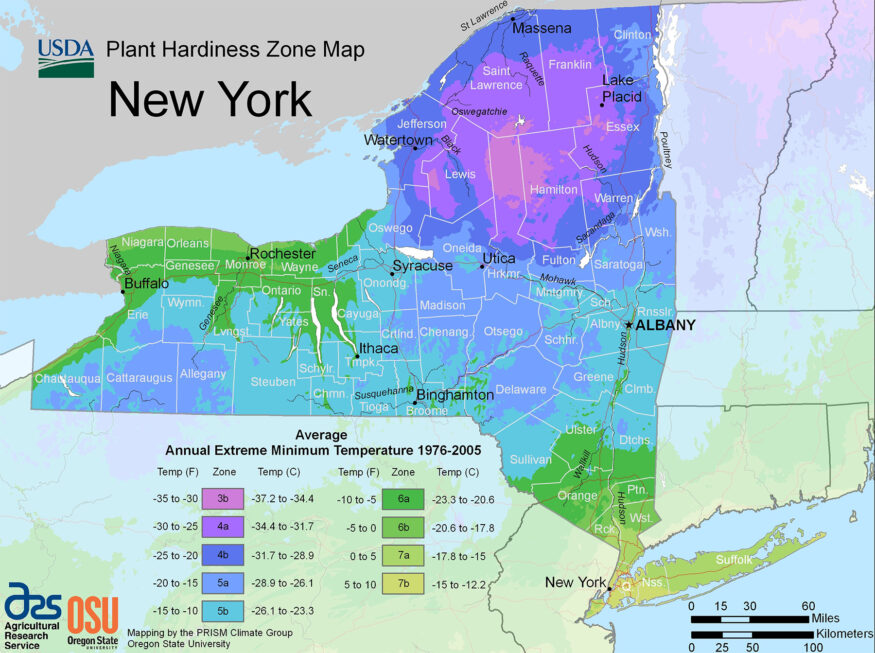
Frigid Winters
New York’s winters can be brutal, with freezing temperatures and heavy snowfall. To combat these icy conditions, choose cool-season grasses like Kentucky bluegrass, perennial ryegrass, or fescues that can withstand the cold.
Additionally, avoid walking or driving on frozen lawns to prevent soil compaction and root damage. Remember, a healthy lawn starts with the right grass type for your area.
Sweltering Summers
New York summers bring scorching heat and high humidity, making it essential to select warm-season grasses such as zoysia that can handle the heat. To protect your lawn, water it deeply in the early morning or evening, and mow at a higher height to provide shade and insulation. As a homeowner for 15 years, I’ve found this to be a crucial step in maintaining a lush, green lawn throughout the summer months.
Shady Spots
New York is filled with shady areas due to trees, buildings, and hills. If your lawn is in a shaded location, opt for shade-tolerant grasses like fine fescue. While it’s important to prune or thin out any trees or shrubs blocking sunlight, take care not to remove too much foliage, as this can lead to soil erosion and water runoff.
Dealing with Poor or Sandy Soil
Certain New York regions have poor or sandy soil, which can lack nutrients and have low water-holding capacity. In these cases, choose grasses that adapt to various soil types and pH levels, such as fine fescue.
Boost soil quality by adding organic matter like a high quality fertilizer, compost or mulch to increase fertility and water retention. To improve drainage and reduce compaction, aerate your soil every few years.
Looking for the best grass seed for your region?
Our smart lawn plans are designed to work perfectly with your local soil and climate conditions, without any of the toxic stuff.
Use the code EHG20 for an instant $20 discount!
- Personalized lawn care: Custom lawn plans based on soil analysis, climate data, and your specific lawn needs.
- Convenience with a conscience: Products that are not only easy to use but also safe for you, your pets, and the planet.
- Science-backed formulas: Bio-based formulas contain effective, natural ingredients like seaweed, molasses, and iron.
- Expert support: Get one-on-one guidance from a real person and rest easy with Sunday's satisfaction guarantee.
Frequently Asked Questions
What are the most common grass types for New York lawns?
Common grass types that thrive in New York include Kentucky Bluegrasses, fine fescues, tall fescues, and perennial ryegrass
Are there specific grass types that perform well in shaded areas?
Fine fescues and tall fescues are suitable for shaded or low-moisture areas with sandy soils and good drainage, which makes them ideal for parts of upstate New York.
How do I choose a quality grass seed mixture for my New York lawn?
Look for grass seed mixtures containing Kentucky bluegrass, fescue varieties, and a small amount of perennial ryegrass, as these grass types are well-suited for New York’s climate.
Are there specific types of grass best suited for high foot traffic areas?
Kentucky bluegrass is known for its resilience to foot traffic and is a popular choice for lawns in New York and the New England region.
